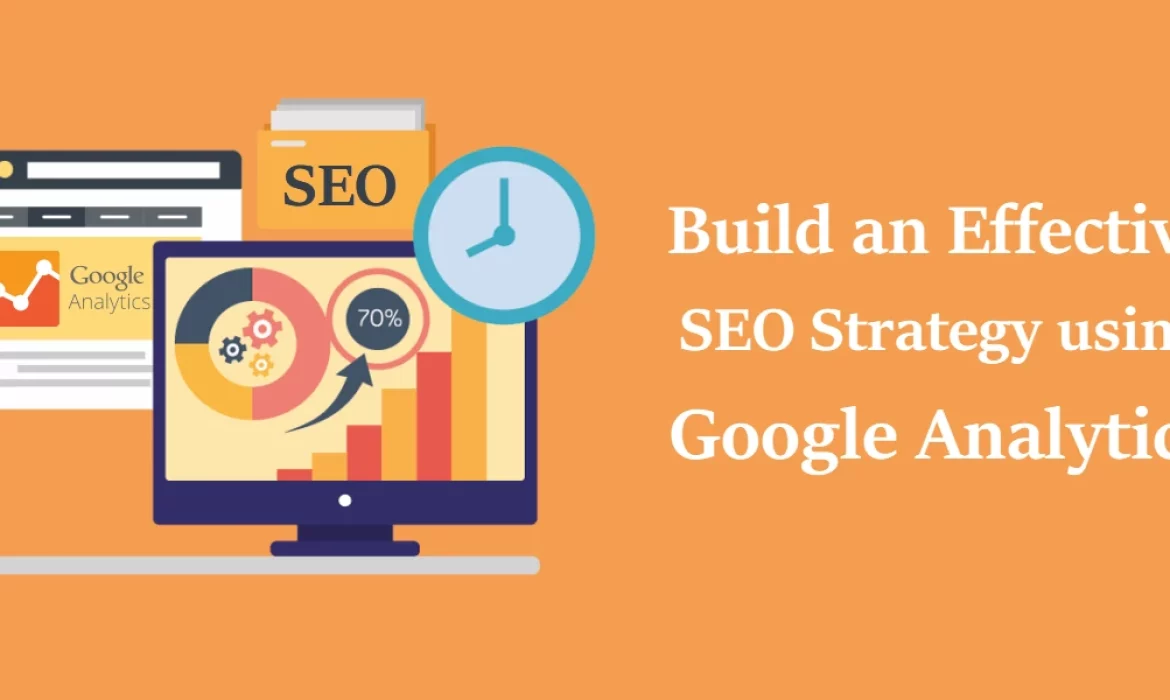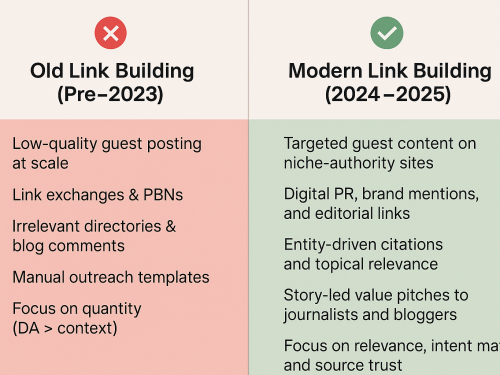
SEO and Google Analytics are the two sides of the same coin named digital marketing. From the keyword research to ultimately gaining higher ranking under SERPs, Google Analytics plays a major role during the whole process. Here are some meaningful insights that should be taken into consideration when you are planning your next SEO strategy.
Let’s begin with some actionable insights while using Google Analytics for SEO:
1. Custom Segments:
Custom segments help to understand the type of users engaged on your website. The common facets of creating a custom segment could be the time spent on the website, the number of visitors from a specific location, the number of visitors who completed their goals.
It helps you understand the audience on your webpage and the way they engage with the page. If you tend to create an audience tab of Google Analytics there are additional segments that can provide you with a detailed look at the audience on your website.
Here are such categories that depict the interest report very well: Affinity categories, In-Market segments, and Other categories. Moreover, for more detailed information you can navigate through the audience tab to understand the demographic data. You can also go for a custom data option to track the audience with the help of a tab ‘+Add Segment’.
In order to have a good compilation of data you may need to set a duration from 6 months to a year if applicable.
2. Monitor Mobile Traffic:
The usage of smartphones has significantly risen the scope of marketing through mobiles. When it comes to engagement through mobiles it is the hottest trend nowadays. Here are certain parameters for you to judge the success rate of a website looking at mobile traffic.
Number of Mobile Conversions
Add a mobile segment to ascertain the number of mobile conversions at each webpage.
Mobile Bounce Rate
A single page session is a bounce. It is important to look out for pages with a high bounce rate to understand and fix potential issues. It could be due to the type of page that may be responsible for driving away the traffic. That makes setting up Google Analytics a mobile bounce rate benchmark the best way to analyze the ROI.
Comparing The Metrics
Comparing the mobile and desktop metrics may help you to understand the possible reasons for any deviation in the mobile and desktop experiences. Moreover, you can work your way to enhance the user experience by making it more engaging.
3. Site Search:
You are advised to focus on website search if your website has a search bar. A search bar gives you enormous opportunities to understand your audience and their choices as to what they are searching and interested in.
The search term that users generally enter in the search bar of your website gives an insight into the trending content ideas. It would benefit both the customers and the business. For instance, if a user enters a particular product in the search bar of your website, it depicts the preference of your potential customer and indicates that, that particular product should be featured on the home page as well.
4. Bounce Rate:
The bounce rate typically depicts the average percentage of people who leave your website after viewing only one page. Well, a high bounce rate doesn’t always reflect poor user experience but, it may be possible that visitors were unable to find what they were exactly looking for.
It is usually seen that a poor website design contributes to a high bounce rate and the content doesn’t match the expectations of the user. This is indicative of the fact that the website must include relevant content along with a better design.
5. Traffic Source:
When it comes to formulating an effective SEO strategy, it is important to know where your page traffic is coming from. Google Analytics is the most effective tool to get details on this part. The four broad categories that Google Analytics consider while understanding the traffic sources are:
Organic Search
An organic search refers to the natural traffic coming through search engines. It gives you a fair idea of how well your website is performing in terms of ranking. Since Google is the main source for people to search for information, it holds the same level of importance as it is the main source of traffic. An organic search is counted upon when it comes to knowing how successful your SEO strategy is.
Referral Traffic
This is another parameter to judge how effective your SEO strategy has been. It depicts the traffic that is coming from other websites, considering your approach which may involve writing a guest post or linking to other websites. Referral traffic is of great help as it reduces the dependency on the search result alone and enhances the page rank by linking your blogs to other websites. A great number of links pointing towards your website can be the best testimonial for your website that it is doing a great job.
Direct Traffic
Direct traffic refers to the number of people who are searching for your website directly into the browser. For instance, if EvenDigit.com is the most searched website, it’s an indication that people are following the website out of sheer interest and loyalty. It is surely going to add authority and surge the website’s ranking in SERPs.
Social Traffic
When the original content is shared across different social media channels it has a major impact on your rankings. Developing credible backlinks to your social media posts boosts the search rank. Moreover, your social media profiles impact majorly, as people tend to search it more often and as a result, they appear on the top in search listings. Always keep in mind the more engaging your social media posts will be the more traffic it will derive.
6. Conversion Rate:
Conversion rate is another important metric that has to be considered with utmost importance as it helps in ascertaining the website’s profitability. Supposedly, if you tend to increase your website’s conversion rate from 1% to 2%, your profit would surely get doubled. You can track your conversion rate with the help of Google Analytics that may also change over time depending on how engaging your website is.
However, the parameters defined for conversion may vary from site to site depending on the conversion goals. A website generally aligns the conversion goal with the SEO strategy such as a sale, earning an email list or a social share. A higher conversion rate indicates your website’s better performance while a low conversion rate depicts that you are investing in the wrong traffic. You need to work on your call to action and an effective sales copy.
You should know that your conversions have a significant impact on the profits and you should definitely optimize your website in this direction. Even minor tweaks can have a great impact on your conversions.
7. Customer Behavior & Top Pages
Have you been to the behavior section of Google Analytics? If not, it is recommended to check it out. It gives you a fair idea of the traffic volume as it shows the best-performing pages of your website. Google Analytics displays the total number of page views along with the percentage of page views across the entire website.
It depicts the real world data by clearly showing you how your audiences are responding. You are advised to experiment with different types of content as a part of your SEO strategy so that you may get a fair idea of what works for you and what not.
However, traffic volume is one of the important parameters to understand your customer behavior, you should also consider the social shares per page. you can opt for different social media tools and WordPress plugins to get this information.
8. Customer Lifetime Value
Also known as Lifetime Value, Lifetime Customer Value or Customer Lifetime Value, the term refers to the profit which a customer is predicted to give to your business for the entire business relationship. This helps in understanding the value of each customer which in turn gauges the growth of the business. It is considered as the most important and final metric that reflects the company’s value itself.
However, the calculation is slightly difficult but, it is important in business forecasting and setting marketing budgets. Moreover, it assists in determining the net profit from each customer’s lifetime purchase value. So, You need to understand when a customer becomes a part of the purchase stage of your sales funnel and if he/she makes a repeat purchase. It helps in determining the approximate value of each customer and this particular information allows you to retain the ideal customers.
For instance, a membership website charges $100 per month and suppose an average customer remains for around 6 months then, each customer costs worth $600 on an average for that particular website. This is how you determine the expected value of a customer considering the customer lifetime value approach.
It helps you to get an idea of how effective you are at retaining your customers which in turn helps you allocate resources more effectively. A higher lifetime value indicates that you can opt to spend more on promoting your website which will help your business grow quickly.
Final Words
These are the opportunities that you can explore if you have familiarity with Google Analytics and SEO. Google Analytics is of great use in formulating the best SEO strategies for your website. You can work through any of the above-mentioned strategies to enhance the website ranking and better return on investment.
EvenDigit
EvenDigit is an award-winning Digital Marketing agency, a brand owned by Softude (formerly Systematix Infotech) – A CMMI Level 5 Company. Softude creates leading-edge digital transformation solutions to help domain-leading businesses and innovative startups deliver to excel.
We are a team of 70+ enthusiastic millennials who are experienced, result-driven, and hard-wired digital marketers, and that collectively makes us EvenDigit. Read More




